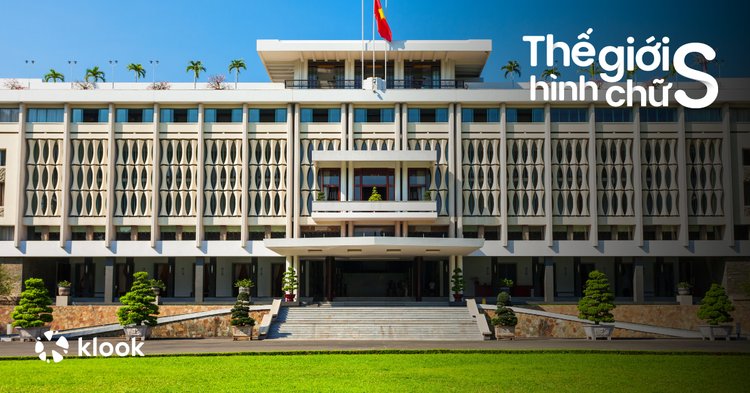Washington, DC, November 1, 2020— President John F. Kennedy was more disposed to support the removal of South Vietnamese President Ngo Dinh Diem in late 1963 than previously appeared to be the case, according to a recently released White House tape and transcript.
Có Gì Đặc Biệt Ở Nhà Hát Thành Phố Hồ Chí Minh? – Klook Blog
Watch the Viet Cong’s guerrilla communist forces move down the Ho Chi Minh Trail through Laos and Cambodia. After South Vietnamese Premier Ngo Dinh Diem canceled reunification elections scheduled for 1956, the communist Viet Minh decided on war. From Vietnam Perspective (1985), a documentary by Encyclopædia Britannica Educational Corporation.

Source Image: travelpassionate.com
Download Image
Jan 1, 2024Ngo Dinh Diem (born January 3, 1901, Quang Binh province, northern Vietnam—died November 2, 1963, Cho Lon, South Vietnam [now in Vietnam]) Vietnamese political leader who served as president, with dictatorial powers, of what was then South Vietnam, from 1955 until his assassination. Early life and rise to power Ngo Dinh Diem Ngo Dinh Diem, 1954.

Source Image: mousekeymakehistory.wordpress.com
Download Image
Dinh Độc Lập Sài Gòn, Hành Trình Lịch Sử & Văn Hoá Đặc Sắc – Klook Blog The two Vietnams (1954-65) Vietnam (1954-76) The agreements concluded in Geneva between April and July 1954 (collectively called the Geneva Accords) were signed by French and Viet Minh representatives and provided for a cease-fire and temporary division of the country into two military zones at latitude 17 °N (popularly called the 17th parallel).

Source Image: vietnamtravel.com
Download Image
Ho Chi Minh Vs Ngo Dinh Diem
The two Vietnams (1954-65) Vietnam (1954-76) The agreements concluded in Geneva between April and July 1954 (collectively called the Geneva Accords) were signed by French and Viet Minh representatives and provided for a cease-fire and temporary division of the country into two military zones at latitude 17 °N (popularly called the 17th parallel). Getty Images Ho Chi Minh first emerged as an outspoken voice for Vietnamese independence while living as a young man in France during World War I. Inspired by the Bolshevik Revolution, he joined
Independence Palace, Ho Chi Minh city
Diệm has been a controversial historical figure. Some historians have considered him a tool of the United States, while others portrayed him as an avatar of Vietnamese tradition. At the time of his assassination, he was widely considered to be a corrupt dictator . Family and early life TINH THẦN TT NGÔ ĐÌNH DIỆM: HÌNH ẢNH TỔNG THỐNG NGÔ ĐÌNH DIỆM NHỮNG NĂM ĐẦU VỀ CHẤP CHÁNH 1#

Source Image: khoitinhthanngodinhdiemducquoc.blogspot.com
Download Image
Independence Palace in Saigon – Come and Finf Pieces of the Past | Lux Travel DMC’s Blog Diệm has been a controversial historical figure. Some historians have considered him a tool of the United States, while others portrayed him as an avatar of Vietnamese tradition. At the time of his assassination, he was widely considered to be a corrupt dictator . Family and early life

Source Image: luxtraveldmc.com
Download Image
Có Gì Đặc Biệt Ở Nhà Hát Thành Phố Hồ Chí Minh? – Klook Blog Washington, DC, November 1, 2020— President John F. Kennedy was more disposed to support the removal of South Vietnamese President Ngo Dinh Diem in late 1963 than previously appeared to be the case, according to a recently released White House tape and transcript.

Source Image: klook.com
Download Image
Dinh Độc Lập Sài Gòn, Hành Trình Lịch Sử & Văn Hoá Đặc Sắc – Klook Blog Jan 1, 2024Ngo Dinh Diem (born January 3, 1901, Quang Binh province, northern Vietnam—died November 2, 1963, Cho Lon, South Vietnam [now in Vietnam]) Vietnamese political leader who served as president, with dictatorial powers, of what was then South Vietnam, from 1955 until his assassination. Early life and rise to power Ngo Dinh Diem Ngo Dinh Diem, 1954.

Source Image: klook.com
Download Image
Không thể so sánh Ngô Đình Diệm với Hồ Chí Minh – Dân Làm Báo Ngo Dinh Diem became the prime minister of South Vietnam in 1954, thanks largely to American manipulation. From the outset, Ngo faced considerable challenges from criminals and political opponents, particularly communist subversives still active in the southern provinces.

Source Image: danlambaovn.blogspot.com
Download Image
All the Best Things to Do in District 1, Ho Chi Minh City – There She Goes Again The two Vietnams (1954-65) Vietnam (1954-76) The agreements concluded in Geneva between April and July 1954 (collectively called the Geneva Accords) were signed by French and Viet Minh representatives and provided for a cease-fire and temporary division of the country into two military zones at latitude 17 °N (popularly called the 17th parallel).

Source Image: thereshegoesagain.org
Download Image
Vietnam – French Colonialism, War, Divided Nation | Britannica Getty Images Ho Chi Minh first emerged as an outspoken voice for Vietnamese independence while living as a young man in France during World War I. Inspired by the Bolshevik Revolution, he joined

Source Image: britannica.com
Download Image
Independence Palace in Saigon – Come and Finf Pieces of the Past | Lux Travel DMC’s Blog
Vietnam – French Colonialism, War, Divided Nation | Britannica Watch the Viet Cong’s guerrilla communist forces move down the Ho Chi Minh Trail through Laos and Cambodia. After South Vietnamese Premier Ngo Dinh Diem canceled reunification elections scheduled for 1956, the communist Viet Minh decided on war. From Vietnam Perspective (1985), a documentary by Encyclopædia Britannica Educational Corporation.
Dinh Độc Lập Sài Gòn, Hành Trình Lịch Sử & Văn Hoá Đặc Sắc – Klook Blog All the Best Things to Do in District 1, Ho Chi Minh City – There She Goes Again Ngo Dinh Diem became the prime minister of South Vietnam in 1954, thanks largely to American manipulation. From the outset, Ngo faced considerable challenges from criminals and political opponents, particularly communist subversives still active in the southern provinces.